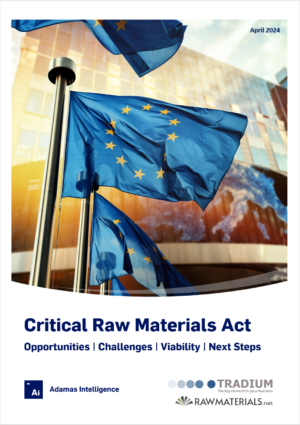Graph of global battery suppliers explains US trade war over Chinese EVs

Barriers to entry
The Biden administration on Tuesday quadrupled import tariffs on vehicles made in China, first implemented by the Trump White House in 2017, lifting levies to a whopping 100%, effective this year.
Import duties on lithium-ion cells and components from Chinese manufacturers were also increased from 7.5% to 25% effective in 2024. Rare earth permanent magnets, used in the motors of over 90% of EVs sold globally, now also attract an import tax of 25%.
The moves come after a bipartisan group of US lawmakers urged the Biden administration last year to do more to block an expected flood of cheap EVs and find ways to prevent Chinese automakers from exporting to the US by locating plants in countries with free trade deals, such as Mexico.
In addition, in February the Biden White House ordered an investigation into the national security risks posed by what was termed “Chinese smart cars” which could be used to gather sensitive data and spy on US citizens.
The UK has also started an investigation into Chinese EV imports, similar to a probe launched by the European Union in October, which accused Beijing of giving huge state subsidies to domestic carmakers to keep EV prices artificially low.
The EU Commission made an interim announcement saying that Chinese subsidies to the industry went as far as direct cash payments and put in place measures to retroactively impose levies. A final report could result in the imposition of trade sanctions or other punitive measures in the region as soon as mid-year.

Biggest gets bigger
Chinese cell suppliers deployed nearly 60% of the world’s battery capacity (in GWh terms) in newly sold EVs through the first quarter of 2024.
After 24% year on year growth during the first three months of 2024, CATL, the world’s largest cell maker, managed to lift its market share to 31%, while top EV maker by volume, BYD, grew GWhs deployed by an eye-catching 40% over the same period.
In contrast, among the big 3, the combined battery capacity deployed in EVs fitted with LG Energy Solution batteries declined by 10% in Q1, dropping the South Korean cell supplier’s market share to 15%.
In the US, CATL supplied 10% of the cell packs fitted to EVs (including a small number of plug-in hybrids) in Q1 of this year with the vast majority strapped to Tesla’s Model 3. CATL also supplies power units for EVs from Mercedes, BMW, Kia, Nissan and several others currently available in the US.
Over the same period, longtime Tesla cell supplier Panasonic was the top provider in the US, garnering 30% market share, but saw a 22% fall in GWh deployed versus Q1 the year prior, Adamas data shows.
 Made in China
Made in China
Data from Adamas Intelligence shows that in the 2023 calendar year Chinese-made EVs rolled 408.9 GWh (or 59% of the global total) of fresh battery power onto the world’s roads, including non-Chinese brands like Tesla, Dacia, BMW and others.
China was an exporter of 49.5 GWh of installed battery power to the rest of the world in 2023, mostly to Europe and the UK. In Europe, made-in-China EVs captured nearly a fifth of the market on a GWh basis.
Over the same period, the US imported 28.8 GWh of installed battery capacity to meet EV demand inside the country. The US also exported 13.6 GWh of battery power leaving net imports at 15.2 GWh for the year.
Notably, Germany’s exports of installed battery power were greater than China’s at 58.5 GWh last year, but in contrast, Europe’s number two market by GWh deployed, the UK, exported only 2.2 GWh.
China’s overall vehicle exports surpassed South Korea in 2021, then overtook Germany in 2022, and then last year took the top spot from Japan. Half of Chinese vehicle exports of 3.2 million units in 2023 were EVs, up 64% from the year before, according to the Chinese General Administration of Customs.
EV, Battery and Battery Materials Market Intelligence:
EV Battery Capacity and Battery Metals Tracker
Building on ongoing EV registrations in over 110 countries, our web-based platform helps users track monthly deployment of battery metals and materials, battery capacity, and the ever-evolving competitive landscapes of battery chemistries and cell suppliers.
EV Battery Capacity Monthly
The ‘EV Battery Capacity Monthly’ is a subscription-based report for tracking monthly deployment of passenger EV battery capacity by EV type, region, country, make, model, cell supplier and cell chemistry on an ongoing basis.
EV Battery Lithium Monthly
The ‘EV Battery Lithium Monthly’ is a subscription-based report and data service for tracking end-to-end, market-moving developments across the global EV, battery and lithium supply chain.





